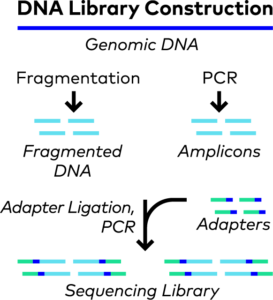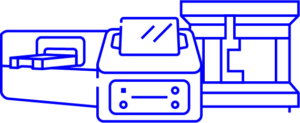Tips on improving a NGS Library Preparation
Improving your NGS library construction pipeline is time well spent. A high-quality NGS library is essential for reliable next-generation sequencing data. Optimizing key elements along the process will yield reproducible results that you can count on.
Depending on the goals of your lab, various kits are available for different types of analysis and some are more amenable to high-throughput automation.
Navigating through pitfalls and “re-dos” can reduce costs, save time, and reduce overall frustration in the lab. These tips to improve your NGS library prep will help you to get to high-quality libraries and better data in no time.
BETTER NGS LIBRARY PREPARATION
High Quality DNA/RNA In

To create an NGS library it is critical to begin with a pure and highly concentrated DNA or RNA sample. Make sure to try various extraction approaches and choose a the solution that yields the purest DNA or RNA with sufficient input for several runs. Further, choose a library preparation kit that has been developed to support the target analysis, starting material, and the degree of automation that you intend to establish in your laboratory.
Concentration and cycle optimization of PCR adapters

During the library preparation process, target fragments are amplified to allow for sufficient material for the degree of coverage required to generate a trustworthy sequence determination.However, over-amplification can lead to PCR bias, duplicates and adapter dimers. Optimizing the numbers of cycles based on the imput concentration can reduce these unintended biproducts leading to a more efficient and high quality analysis.
Library QC and quantification

Currently, the approach to NGS library quality control is well established and includes both library size determination and library quantification. Accurate and consistent sizing and concentration of libraries indicates high-quality preparation and usually guarantees reliable coverage and reproducible data in sequencing experiments.
Sizing via microfluidic or capillary electrophoresis will show libraries that are not of high enough quality which allow you to react early rather than wasting precious capacity on the flow cell with fragments that are not of sufficient quality for sequencing.
Quantification using an intercalating dye and fluorescence detector will allow for library normalization: The same mass of each sample is evenly distributed and represented in the data set.Monitoring this data can uncover variability in your library construction pipeline and provide key insights that can be used to optimize your manual or automated method for preparing libraries.
Automation and the Power of Standardized and Tested Protocols

Most liquid handling platforms can be programmed to generate libraries, many vendors treat library preparation as a custom project requiring solution configuration and weeks of software programming and testing. Choose an automation provider that offers a standardized configuration for NGS and a library of standardized and tested protocols that can be available within days of installation. There is tremendous power in using protocols that are consistently utilized by researchers from around the globe on the exact hardware configuration that you are investing in.
Any customer of the G.STATION receives exactly the same hardware configuration and can choose from a library of protocols in the cloud. Which have developed in-house by experts with decades of experience optimizing and troubleshooting NGS Library Preparation pipelines. Effectively, this will save you months of effort in optimizing and developing a method in house, and provides a welcomed piece of mind when making such a substantial investment in automation.
Optimize for Costs where it Makes Sense

Some aspects of the library preparation process that do not need to be expensive. Automation consumables, especially pipette tips, can be a cost burden to the lab and can be scarcely available from vendors. New technologies enable tip-free dispensing and bead-based clean-ups to optimize for cost per sample.
The I.DOT non-contact dispenser reliably dispenses from 8 nL to 10s of uL
enabling tip-free enzyme, buffer, and bead addition as part of a semi-automated or fully automated workflow. The G.PURE Bead-Based Clean-up Device allows for ethanol addition and removal in minutes with zero consumable usage.
To learn more about the G.STATION, book a demo today.
Download our Tips to Improve NGS Library Prep Infographic.